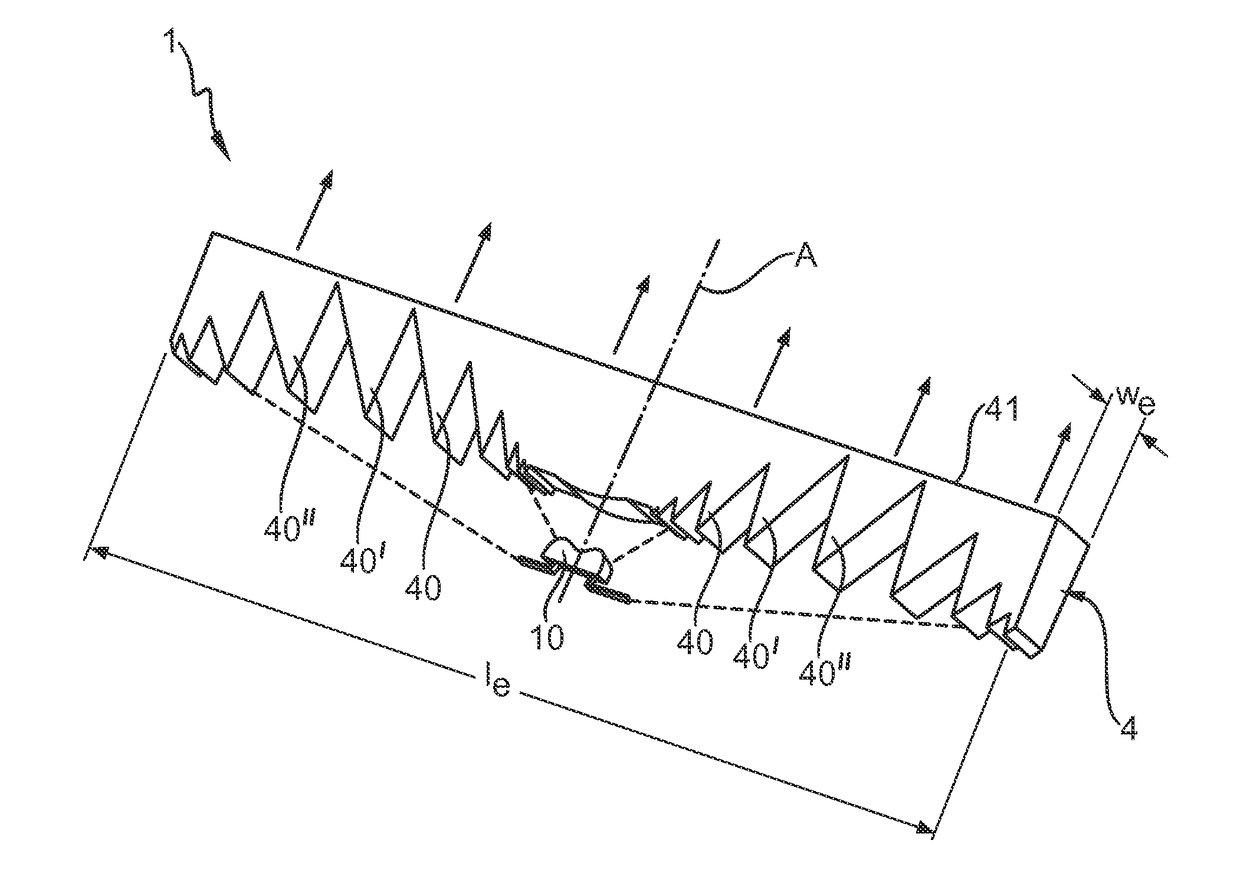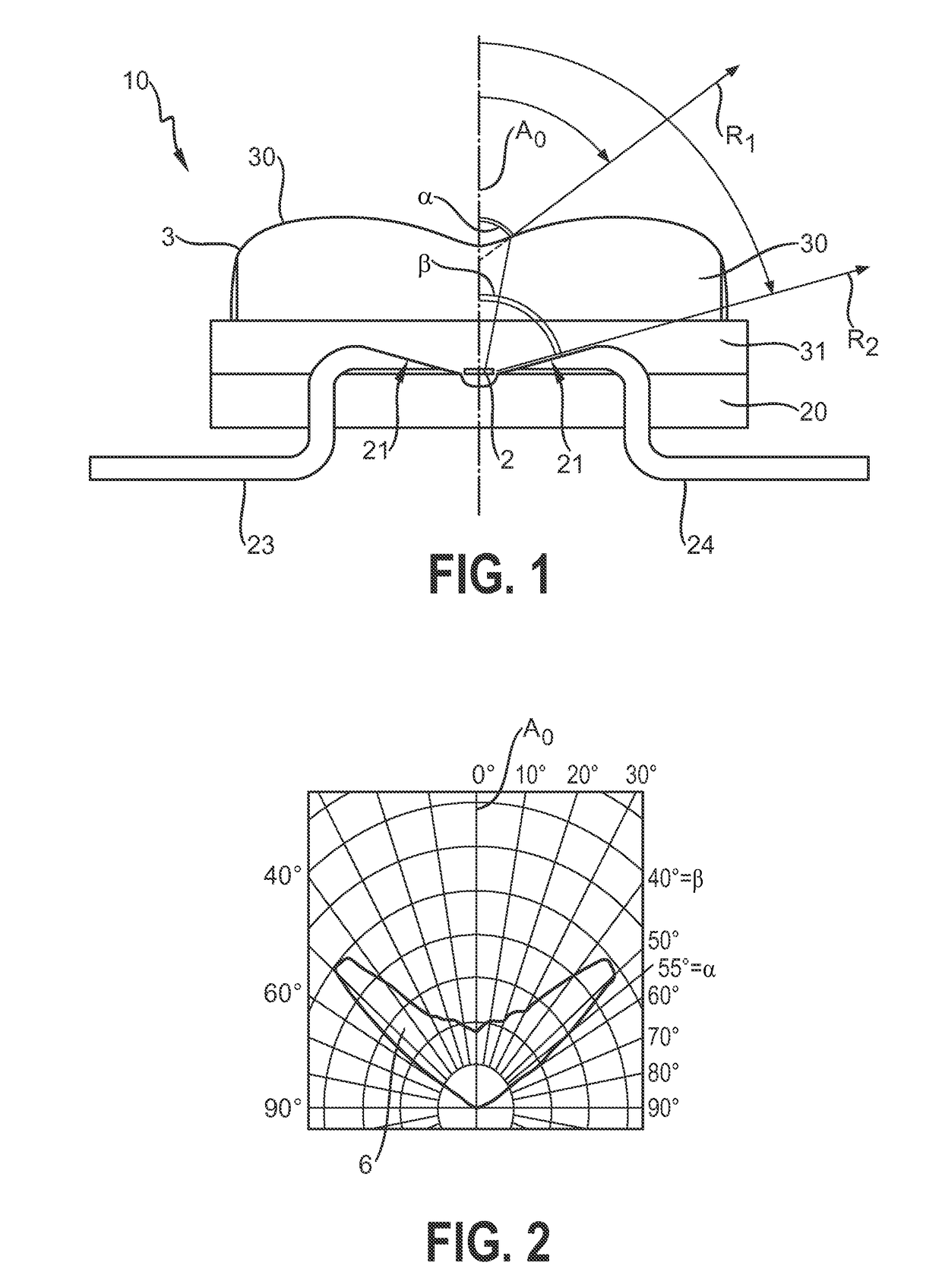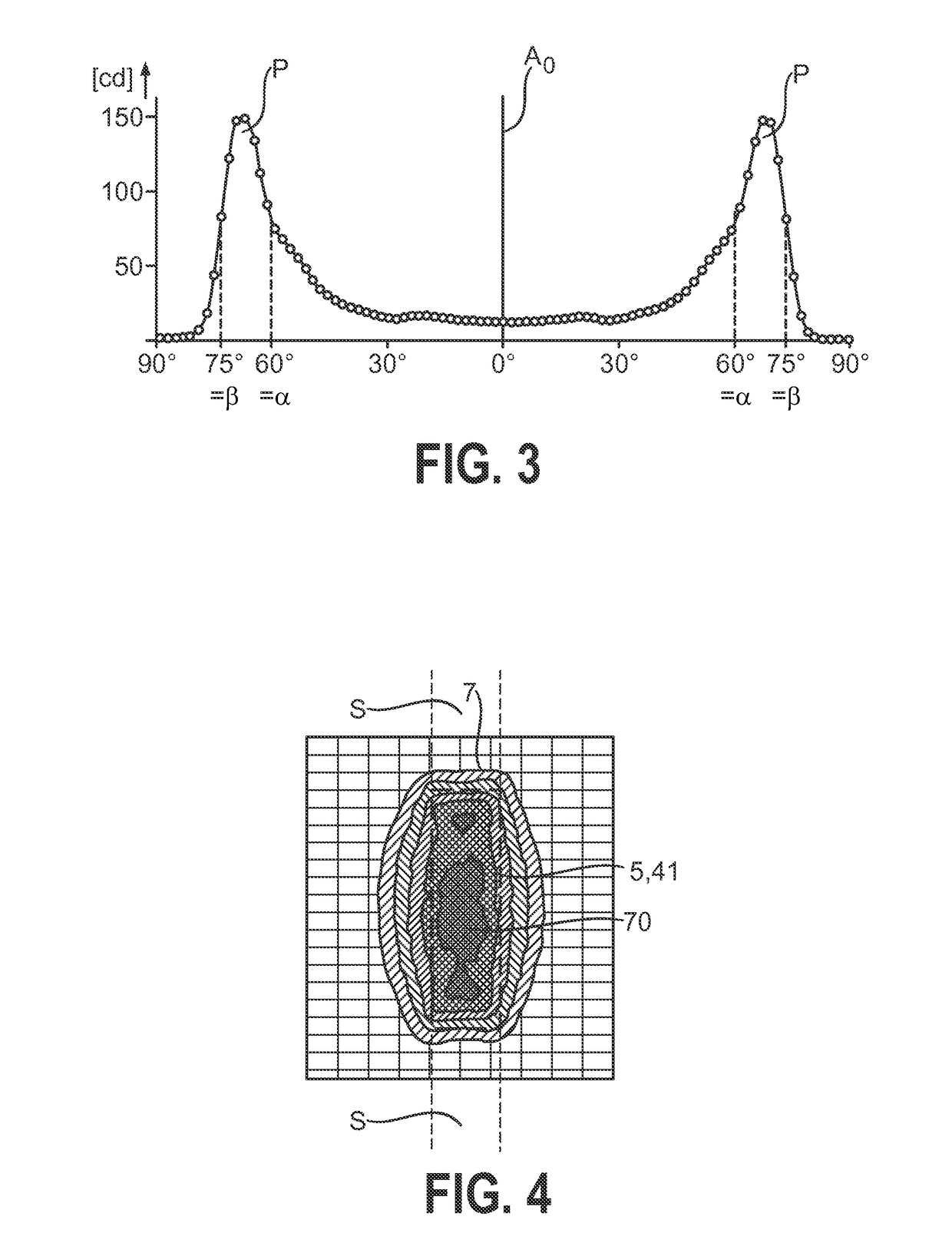Lighting arrangement
a technology of lighting arrangement and led chip, applied in the direction of fixed installation, lighting and heating equipment, instruments, etc., can solve the problems of reducing overall brightness, affecting the effect of lighting arrangement, and affecting the perception of led chip light, etc., and achieves effective and reliable lighting arrangement. good
- Summary
- Abstract
- Description
- Claims
- Application Information
AI Technical Summary
Benefits of technology
Problems solved by technology
Method used
Image
Examples
first embodiment
[0047]FIG. 6 shows a lighting arrangement 1 according to the invention. Here, the lighting element 10 is arranged below a Fresnel lens element 4, comprising a body with a plurality of lateral refracting prism elements 40, 40′, 40″, a central refracting portion, and an essentially rectangular emission face 41. The Fresnel lens element 4 is preferably formed in one piece, for example by an extrusion or milling process. The light emitted by the lighting element 10 is spread outward by the double-lobed spreading element such that a “batwing” characteristic is predominantly obtained, indicated here by the broken lines. The lateral refracting prism elements 40, 40′, 40″ are shaped to collect the light of various sectors of the “batwing” and refract the collected light essentially perpendicularly outward from the emission face 41 of the Fresnel lens 4. To an observer looking at the emission face 41, therefore, this appears as a uniform rectangular source of light with a length le and width...
second embodiment
[0049]FIG. 8 shows a lighting arrangement 1′ according to the invention. Here, the lighting element 10 is arranged below a translucent strip 5 that is coated with or otherwise treated to comprise a phosphor layer, indicated by the stippled pattern. The phosphor layer is illuminated by the batwing distribution of the light spread by the lighting element 10 when the enclosed LED is driven by a voltage across its electrodes. Since the phosphor collects the incident light and re-emits or scatters the light essentially uniformly according to the Lambert cosine law, i.e. the phosphor layer acts as an isotropic radiator, the effect of this lighting arrangement 1′ is to provide an evenly “emitting” surface 5 that itself appears to act as a light source 5. The light collected and emitted by the phosphor from a point on the translucent strip 5 is indicated here by groups of light rays emitted essentially uniformly in all directions. Such a lighting arrangement 1′ can be used to good effect to...
PUM
 Login to View More
Login to View More Abstract
Description
Claims
Application Information
 Login to View More
Login to View More - R&D
- Intellectual Property
- Life Sciences
- Materials
- Tech Scout
- Unparalleled Data Quality
- Higher Quality Content
- 60% Fewer Hallucinations
Browse by: Latest US Patents, China's latest patents, Technical Efficacy Thesaurus, Application Domain, Technology Topic, Popular Technical Reports.
© 2025 PatSnap. All rights reserved.Legal|Privacy policy|Modern Slavery Act Transparency Statement|Sitemap|About US| Contact US: help@patsnap.com



